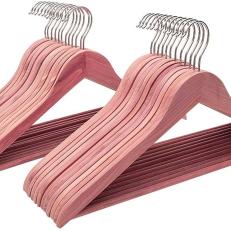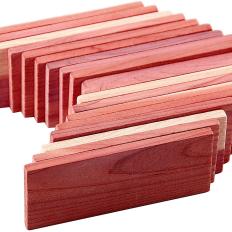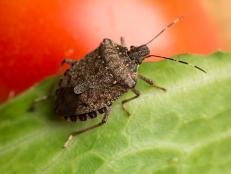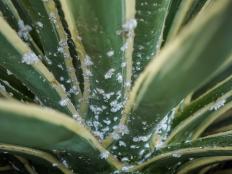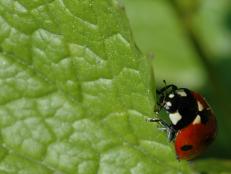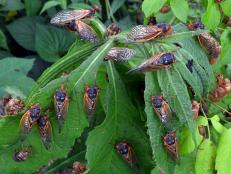How to Get Rid of Clothes and Pantry Moths
Remove and prevent pantry moths and clothing moths from your home with these simple, effective techniques.
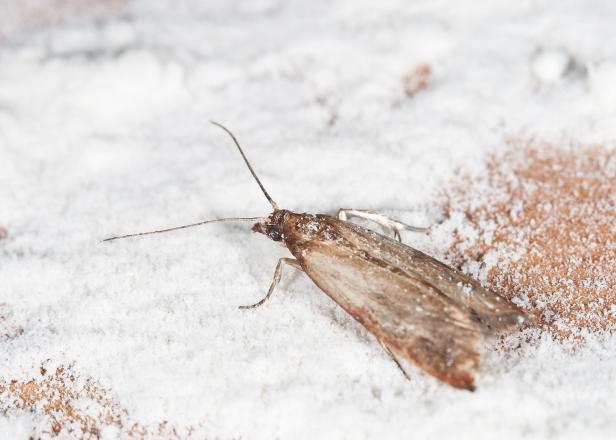
Closet moths, pantry moths, and even outdoor LDD moths can disrupt your life. Learn how to eliminate and treat your property with these tips.

Controlling a moth infestation starts with understanding why the moths were attracted to that particular spot in your home or closet. Commonly drawn to accessible food and dark, humid spaces, moths — along with their eggs and larvae — can infiltrate your pantry and dry goods or destroy your wardrobe. Not all infestations are easy to identify or eliminate, but armed with the right knowledge and know-how, you can certainly rid your space of moths without the help of a pest control specialist.
Learn how to remove an infestation of moths in and around your home and prevent them from returning with these tips specific to food pantry moths and closet moths.
What Are Pantry Moths?
Indianmeal moths (Plodia interpunctella) are most likely to be found in closets and dark, deep food pantries. Accessible food, like cereals and grains in loose bags, creates a sustainable environment for them to grow, reproduce and thrive. If one moth appears when you’re searching in the back of your cabinet, have no doubt that there are more in hiding in various stages of life. Mitigating a pantry moth infestation requires thorough action and ongoing monitoring.
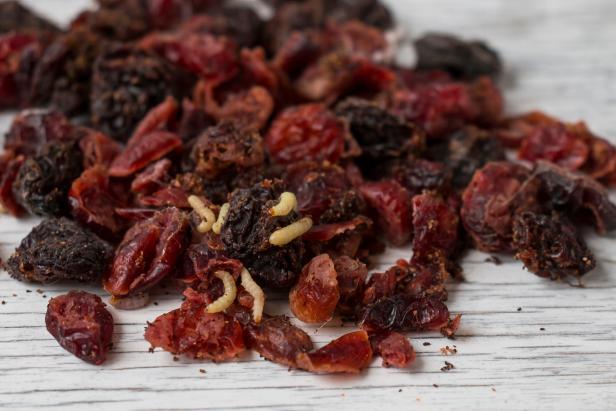
Pantry moth larvae in raisins.
Where Do Pantry Moths Come From?
Stored-product pest control is essentially its own sub-industry — restaurants and food suppliers need to be experts in it for food safety and must be swiftly able to manage infestations. When they fail to control an infestation, it increases the likelihood of the moths transferring through warehouses and into grocery stores and homes. Homeowners may feel caught off-guard or personally responsible when they discover moths, but because eggs may be transferred into a home on product packaging, they’re not too uncommon.
What Do Pantry Moths Look Like?
Adult pantry moths are only the size of cook grain of rice. Their brown wings have a white stripe across them and extend about 3/4 of an inch wide. Closed wings are only 1/4 wide with coppery tips. Newly hatched pantry moth larvae are very small and creamy white while older larvae are yellowish in color. The larvae spin a cover of webbing as they grow and feed.

Pantry moths and larvae in a cabinet.
How to Get Rid of Pantry Moths
- Remove everything from your cabinet.
- Discard all opened pantry items. If you have a boxed item containing a sealed bag inside the box (such as unopened crackers sleeves), you may find comfort in also tossing the cardboard package and wiping the sealed bag down with a damp cloth soaked in white vinegar. Always check for signs of chewing on all packaging and discard anything in question.
- Place all the items you’ve thrown away from your pantry in a sealed garbage bag.
- Wash every sealed jar and can in hot, soapy water. Though it may be hard to spot eggs and larvae, they may be hiding in the crevices of these containers. If paper labels fall off during washing, remember to re-label the container with a permanent marker, including a note with the expiration date.
- Wipe down all surfaces inside your cabinet with a 1:1 spray of water and white vinegar.
- Allow the pantry to sit empty and closed for several days. Check back to see if any moths have appeared from crevices in the shelving.
How to Keep Pantry Moths Out for Good
- Keep all food in air-tight containers.
- Store an open container of bay leaves in your pantry, the scent is a natural deterrent for moths.
- Place a natural, pesticide-free moth trap at the back of the pantry to lure any future moths and reduce the population.
What Are Clothes Moths?
You might see damage on your favorite clothes even before you realize you have a pest issue in your closet. When common clothes moths (Tineola bisselliella) strike your wardrobe, the effects can be upsetting and the eradication can be exhausting. Like pantry moths, clothing moths live in closets in various stages of development and constantly lay eggs and grow larvae. The larvae are most damaging to garments.

Clothing moth larvae consume natural fibers such as the ones in your favorite sweaters.
What do Clothes Moths Look Like?
Tineola bisselliella look similar to pantry moths, but are smaller at about 1/4 inches long. They are beige to buff-colored and their wing tips are fringed with tiny hairs.
Tineola bisselliella larvae are creamy-white caterpillars about 1/2 inches long and feed under a silky webbing.
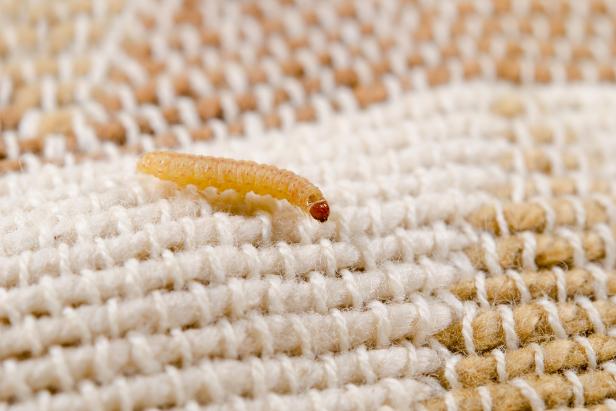
Vacuum your closet regularly to keep clothes moth larvae from infesting your closets.
Clothing moth larvae consume natural fibers, such as the ones in your favorite sweaters, cotton T-shirts or silk. They’re attracted to dark, humid areas and unwashed clothing (especially if there are bits of food stuck to the dirty fibers). It may be hard or impossible to repair your damaged wardrobe, but it is possible to eliminate clothing moths and treat affected fabrics.
If you’re not sure if you have an infestation, get a closer look at your garments. Inspect any worn but unwashed garments, especially around the seams that tend to gather more dirt and skin cells. Look for random holes, adult moths, cocoons, larvae (tiny white caterpillars) and white eggs.
How to Get Rid of Clothing Moths
- Bag and discard any items that cannot be repaired, and leave the bag outside.
- Items that may be repairable or can be cleaned should be bagged and frozen for a minimum of 24 hours to kill active larvae. You can remove them from the freezer after a day, but leave the bag closed until you’re ready to launder.
- Run washable items through a hot water cycle and dry them for a minimum of 30 minutes on a high-temperature setting.
- Bag and send other items for dry cleaning.
- While the closet is empty, wash the walls, baseboards and shelving with a 1:1 concentration of white vinegar and water. Allow it to thoroughly dry.
- Clean carpeting and floors using suitable cleaners for the surface. Be mindful of options that contain pesticides. They may be necessary for serious infestations, but you may want to consider leaving your closet well-ventilated in the days following the treatment.
How to Keep Clothing Moths Out for Good
- Vacuum regularly inside your closet.
- Dry clean or launder clothing with more frequency.
- Launder any secondhand clothing purchased immediately upon bringing it into your home.
- Launder any seasonal items before putting them into storage.
- Hang herbal sachets with lavender, thyme and rosemary to repel moths.
- Look to cedar scents, too, as cedar’s natural oils are powerful enough to kill closet moth larvae and eliminate infestations. Replace shelving with natural cedar boards. Use cedar hangers and cedar sachets for garments. Add cedar blocks into drawers.
- Place adhesive moth traps on the back of shelves and on the top of your closet.
Protect Your Clothing From Moths
Do I Need to Manage a Moth Infestation if It’s Outdoors?
Rarely should you worry about moths when you see them outdoors. They’re a perfectly healthy part of your backyard ecosystem and act both as pollinators and food sources for birds and animals.
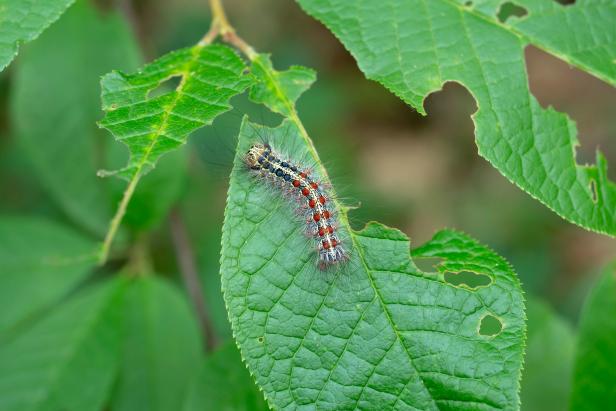
LDD (fka Gypsy Moth) caterpillars eating foliage.
That said, infestations of Lymantria dispar dispar (LDD, often called spongy moths) have been spreading across wooded areas from Maine to Washington State devastating forests of foliage. Being aware of the different types of moths in your own yard is important to identifying LDD and helping to prevent the spread. While the caterpillars have a tendency to eat oak and maple leaves, bad infestations can also kill conifers which cannot produce new needles.
If you notice white moths on your tree trunks or the underside of tree branches, pay close attention. White moths may crawl, but despite having wings, will not fly. Remove these moths and — if they’re already there — the light brown egg sac they’ve affixed to your tree by scraping them thoroughly into a bucket of soapy water or bleach water. Every egg sac contains 500-1,000 eggs, which will hatch into caterpillars the following spring.
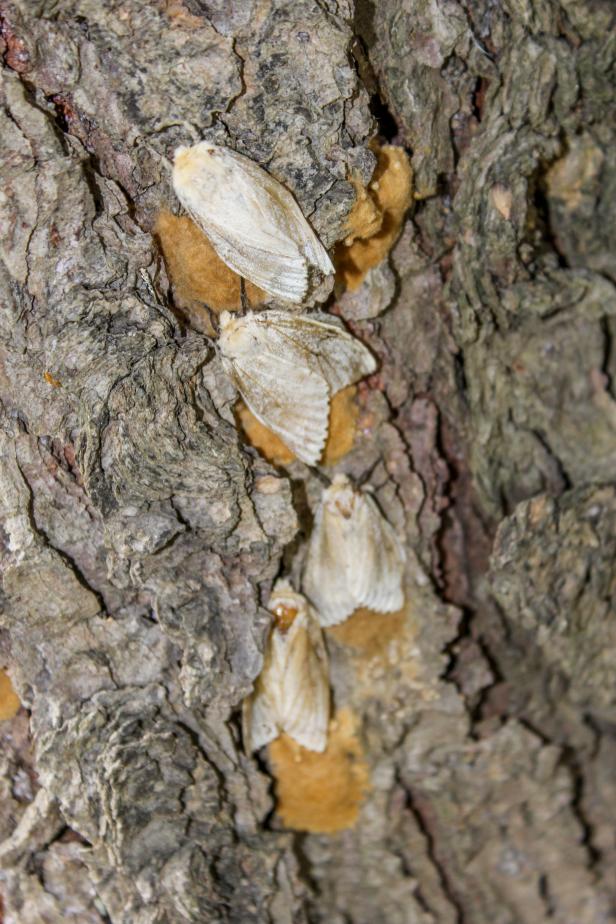
LDD (fka Gypsy Moth) female moths laying egg sacs on tree bark.
Proactive treatment against LDD can prevent property damage. For canopy foliage overhanging your home or patio, contact an arborist for recommendations on tree and soil injections and options for pesticides. Treatments are best implemented in early spring, so if you observe egg sacs in trees in the fall or winter, be prepared to take action when trees begin producing new leaves.






